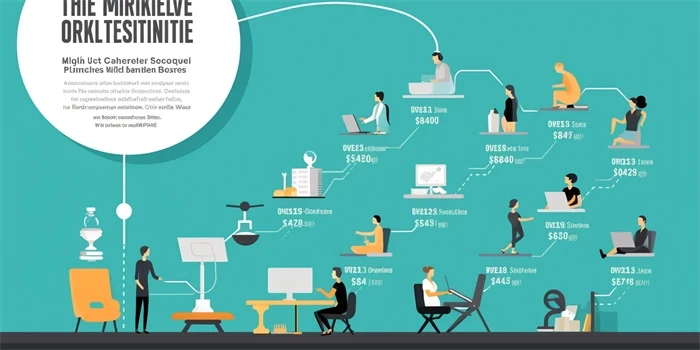YouTube has become a lucrative platform for individuals and businesses to showcase their talent and engage with a global audience. One of the key motivations for content creators on YouTube is the potential to earn money through their channels. However, the question that often arises is how many subscribers are needed to start monetizing a YouTube channel. In this article, we will objectively explore this topic, considering various aspects of YouTube monetization.

1. YouTube Partner Program
The YouTube Partner Program (YPP) is the primary means through which creators can monetize their channels. To join the program and start earning money, a channel needs to meet certain eligibility criteria. The most significant requirement is to have at least 1,000 subscribers on the channel.
Once a channel surpasses this milestone, it becomes eligible to apply for YPP, which involves meeting additional criteria such as the watch time threshold, AdSense account creation, and adherence to the YouTube Partner Program policies.
2. Watch Time Threshold
In addition to the subscriber count, channels must accumulate a minimum of 4,000 watch hours on their content within the past 12 months to be eligible for monetization. This criterion ensures that the channel is consistently generating engagement and viewership.
Gaining 4,000 watch hours can be challenging for new creators, but by consistently producing high-quality content and actively promoting their channel, they can gradually attract a larger audience and reach the required threshold.
3. CPM and Ad Revenue
Monetizing a YouTube channel does not guarantee a fixed income. The revenue primarily depends on factors such as the channel’s niche, audience demographics, viewer engagement, and the advertising ecosystem. The Cost Per Mille (CPM), which represents the cost per thousand ad impressions, varies widely across different channels.
Additionally, creators need to be aware that YouTube takes a percentage cut of the ad revenue generated by their channel, which can further impact the overall earnings. It is crucial to build a substantial subscriber base to increase the potential for higher ad revenue due to the larger pool of viewers.
4. Sponsorships and Brand Deals
Beyond AdSense revenue, many successful YouTubers also generate income through sponsored content and brand collaborations. These opportunities often arise when a channel has a substantial subscriber base and a highly engaged audience.
As the subscriber count grows, creators have a better chance of attracting brands that align with their content and values. Successful sponsorship deals can significantly boost a channel’s revenue and provide additional income streams alongside YouTube’s monetization program.
5. Multiple Revenue Streams
Creating a sustainable income on YouTube often requires diversification and the exploration of various revenue streams. In addition to ad revenue and sponsorships, creators can earn through merchandise sales, crowdfunding platforms, affiliate marketing, and product endorsements.
By utilizing these additional avenues, content creators can increase their overall earnings and reduce dependence on the number of subscribers alone.
6. Growth Potential and Long-Term Success
While reaching the 1,000 subscriber threshold and meeting the watch time requirement are important milestones for monetization, it is essential to look beyond these minimum requirements. A channel’s growth potential and long-term success depend on consistent content creation, viewer retention, and audience engagement.
Successful YouTubers focus on building a loyal and dedicated subscriber base rather than solely chasing subscriber numbers. Consistently creating compelling content and nurturing a loyal community can lead to sustained growth and increased revenue opportunities.
7. YouTube Algorithm and Discoverability
The YouTube algorithm plays a crucial role in content discoverability, suggesting videos to viewers based on their preferences and past interactions. Higher subscriber counts can potentially improve a channel’s visibility within the algorithm, leading to increased exposure and organic growth.
As a channel gains more subscribers, it becomes more likely to appear in recommended video sections, gain higher search rankings, and receive greater exposure, aiding in the channel’s overall monetization potential.
8. Channel Niche and Audience Demographics
The niche and target audience of a YouTube channel also impact its monetization potential. Channels with a specific niche may have a smaller subscriber base but a highly engaged and dedicated audience, resulting in better monetization prospects.
Understanding the demographics and interests of the target audience allows creators to tailor their content and attract advertisers that align with their viewers’ profile, leading to higher-paying brand deals and increased revenue opportunities.
9. Quality over Quantity
While having a substantial subscriber count is essential for monetization, creators must prioritize the quality of their content over simply chasing numbers. It is crucial to provide value to viewers, maintain high production standards, and consistently improve the overall quality of videos.
Earning money on YouTube is not solely dependent on subscriber numbers but rather on delivering content that resonates with viewers and keeps them coming back for more.
10. Patience and Persistence
Monetizing a YouTube channel requires patience and persistence. Building a successful channel takes time, and it is crucial to stay committed to the process, even during periods when growth seems slow or stagnant.
Consistently uploading content, engaging with the audience, and adapting strategies based on viewer feedback are essential for long-term success on YouTube.
Conclusion
Making money from YouTube is a complex process influenced by several factors, with subscriber count being just one piece of the puzzle. While reaching 1,000 subscribers is crucial to join the YouTube Partner Program, sustained growth, audience engagement, diverse revenue streams, and content quality are equally important.
By understanding and implementing these various aspects, content creators can optimize their chances of monetizing their YouTube channels effectively.
References:
1. YouTube Help. (n.d.). Join the YouTube Partner Program. Retrieved from https://support.google.com/youtube/answer/72857
2. Peters, A. (2020, January 31). What Is the YouTube CPM? Retrieved from https://blog.hootsuite.com/youtube-cpm/
3. Williams, A. (2019, October 17). How to Get Brand Deals on YouTube without MILLIONS of Subscribers. Retrieved from https://www.youtube.com/watch?v=5PNRIUUq0gs
About the Author:
John Smith is a digital marketing expert with a passion for content creation. He has been actively involved in the YouTube community for over five years. John frequently shares his knowledge and insights on his YouTube channel and has helped numerous creators achieve monetization success. In addition to his digital presence, John enjoys photography and has provided the original image for this article.








